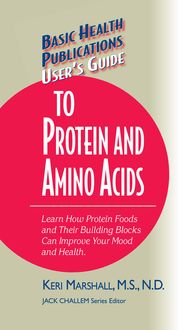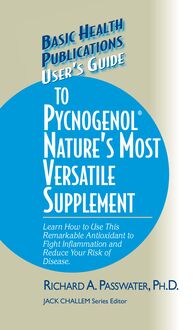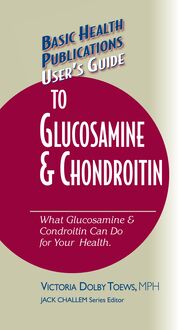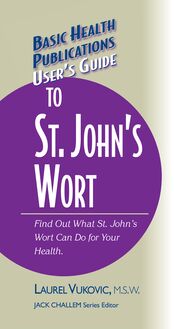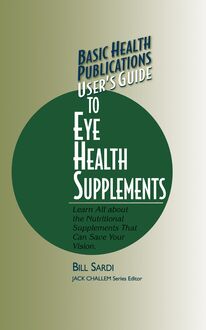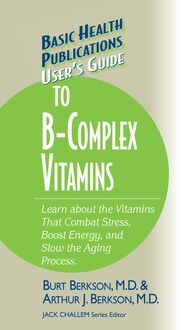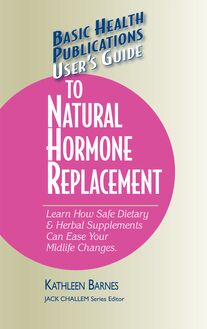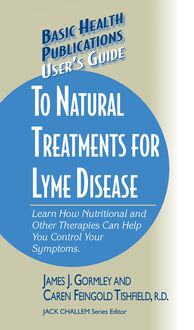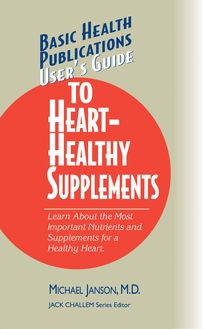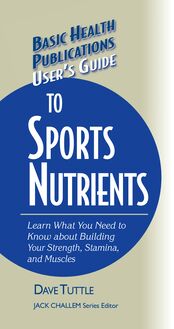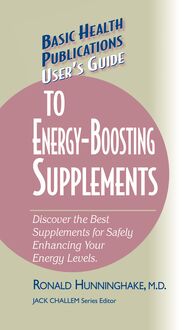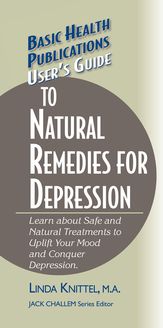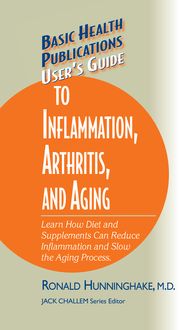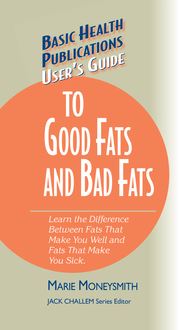User's Guide to Thyroid Disorders , livre ebook
49
pages
English
Ebooks
2006
Vous pourrez modifier la taille du texte de cet ouvrage
Obtenez un accès à la bibliothèque pour le consulter en ligne En savoir plus
Découvre YouScribe et accède à tout notre catalogue !
Découvre YouScribe et accède à tout notre catalogue !
49
pages
English
Ebooks
2006
Vous pourrez modifier la taille du texte de cet ouvrage
Obtenez un accès à la bibliothèque pour le consulter en ligne En savoir plus
Publié par
Date de parution
15 mars 2006
Nombre de lectures
1
EAN13
9781591205296
Langue
English
Publié par
Date de parution
15 mars 2006
EAN13
9781591205296
Langue
English
The information contained in this book is based upon the research and personal and professional experiences of the author. It is not intended as a substitute for consulting with your physician or other healthcare provider. Any attempt to diagnose and treat an illness should be done under the direction of a healthcare professional.
The publisher does not advocate the use of any particular healthcare protocol but believes the information in this book should be available to the public. The publisher and author are not responsible for any adverse effects or consequences resulting from the use of the suggestions, preparations, or procedures discussed in this book. Should the reader have any questions concerning the appropriateness of any procedures or preparations mentioned, the author and the publisher strongly suggest consulting a professional healthcare advisor.
Series Editor: Jack Challem
Editor: Susan Andrews
Typesetter: Gary A. Rosenberg
Series Cover Designer: Mike Stromberg
Basic Health Publications User’s Guides are
published by Basic Health Publications, Inc.
28812 Top of the World Drive
Laguna Beach, CA 92651
949-715-7327
Copyright © 2006 by Kathleen Barnes
ISBN: 978-1-59120-529-6
All rights reserved. No part of this publication may be reproduced, stored in a retrieval system, or transmitted, in any form or by any means, electronic, mechanical, photocopying, recording, or otherwise, without the prior written consent of the copyright owner.
Printed in the United States of America
10 9 8 7 6 5 4 3 2 1
C ONTENTS
Introduction
1. The Basic Science
2. A Complex List of Symptoms
3. Diagnosis
4. Who’s at Risk?
5. Fluctuating Adrenal and Sex Hormones
6. Other Types of Thyroid Dysfunction
7. Conventional Medicine’s Approach to Hypothyroidism
8. Natural Thyroid Remedies
9. Dietary Approaches and Weight Loss
Conclusion
Other Books and Resources
Selected References
I NTRODUCTION
A tiny butterfly-shaped gland that straddles your windpipe and weighs less than an ounce sends signals to every one of the trillions of cells in your body billions of times every single day. It governs every cellular and bodily function. Without it, you’d wind down like a child’s toy. Eventually, you would die.
Many experts believe thyroid disease is the most underdiagnosed illness in America. A paper published in the Journal of the American Medical Association (JAMA) nearly sixty years ago asserted that low thyroid function is the most common disease of those who enter the doctor’s office—and it’s the diagnosis most doctors most often miss. While we have more high tech tools available for diagnosis today than we did in the 1950s, long-time sufferers of debilitating fatigue, susceptibility to cold temperatures, intractable weight gain, shortness of breath, and dozens of other widely diverse symptoms, find little more relief today than their grandparents did in country doctors’ offices two generations ago.
In this book, you’ll learn that a straightforward diagnosis of hypothyroidism is difficult to obtain. A diagnosis of subclinical hypothyroidism (under-the-radar low thyroid function that is not confirmed by tests) is even more difficult to obtain, unless you know how to find a doctor who is willing to prescribe thyroid medication based on symptoms rather than lab tests.
If you’ve grappled with the hash of symptoms that can indicate hypothyroidism (and several other clinical conditions), you may have been subjected to accusations that you are lazy, a hypochondriac, PMS-ing, or perhaps even a little mentally unbalanced. Your problem may be compounded by the possibility that the tendency to hypothyroidism may have been present in your family for generations.
Recent statistics show that up to 10 percent of Americans have thyroid disease or will develop it. As of this writing, more than 13 million Americans have been diagnosed with thyroid deficiency; approximately 50 percent of sufferers are not diagnosed.
In fact, the late Dr. Broda Barnes, a pioneer in the study of thyroid malfunction, estimated that up to 40 percent of all Americans have some degree of thyroid disorder.
Women are five to eight times more likely to have thyroid deficiency for a number of reasons, among them the likelihood there is an as yet-undiscovered female hormonal component to this complex disease.
“Even a slight deficiency in thyroid hormone can cause an incredible number and variety of sabotaging physical, emotional, and mental symptoms,” writes Stephen Langer, M.D., in Solved: The Riddle of Illness.
Calling low thyroid function an “undeclared epidemic,” Richard Shames, M.D., and Karilee Halo Shames, Ph.D., R.N., authors of Thyroid Power , pinpoint the problem precisely: “Although extremely common, low thyroid is largely an unsuspected illness. Even when suspected, it is frequently undiagnosed. When it is diagnosed, it often goes untreated. When it is treated, it is seldom treated optimally.”
Although this book will primarily address hypothyroidism, which is by far the most common form of thyroid dysfunction, other forms of thyroid and glandular malfunction can wreak equal havoc with your life, and I’ll address them, too. Hyperthyroidism (overactive thyroid), Hashimoto’s thyroiditis (an autoimmune form of hypothyroidism), and Graves’ disease (autoimmune overactive thyroid) will be addressed in Chapter 6 , and I’ll discuss the link between hypothyroidism and adrenal imbalance in Chapter 5 .
This book will present thyroid dysfunction in simple terms and hopefully help you understand the complexities of thyroid function and malfunction so you can navigate the stormy seas of the modern medicine, dispel myths about natural treatments perpetuated by the medical profession, and find a diagnosis and correct treatment.
CHAPTER 1
T HE B ASIC S CIENCE
M ost of us are aware that the thyroid secretes a variety of hormones. What you may not realize is that these hormones affect virtually every one of the trillions of cells in your body and every single body function. Without these hormones, you cannot survive in the long term.
The late Broda Barnes, M.D., pioneer of thyroid research and treatment, once wrote about his participation in a medical school experiment: “Students were shocked at the rapid deterioration of a small rabbit after removal of its thyroid. Previously warm at room temperatures, active, and alert, the animal now shivered with cold, moved in slow motion, drugged with fatigue—as if old and feeble. Its skin was scaly, its mucous membranes were infected—particularly in the respiratory system—and its heartbeat and muscles were weak.”
Sound familiar? The thyroid has been likened to a gas pedal, producing hormones that fuel your entire body. To stretch out the metaphor to the breaking point, when you have a lead foot and push on the gas pedal too hard for too long, your car first runs out of gas and eventually breaks down, usually at the most inconvenient time. That’s what’s happening when the thyroid’s hormone production begins to deteriorate—there’s simply been too much pressure on the little gland for too long.
Thyroid Function 101
Your thyroid produces several types of hormones. The two most important are T3 (triiodothyronine) and T4 (thyroxine). These two help get oxygen into your cells, and the oxygen burns calories. In other words, they control your metabolism. Imagine what would happen if there were no oxygen in your cells and no calories burning. It might look very much like Dr. Barnes’ poor rabbit—or like you, if you’re suffering from hypothyroidism. The cells of the thyroid gland are the only ones in your body capable of using iodine—and with the help of tyrosine molecules, iodine helps your body form T3 and T4. In fact, the “3” and “4” in these two hormones refers to the number of iodine molecules in each molecule of thyroid hormone.
Triidothyronine (T3)
The biologically active hormone; comprises 20 percent of thyroid hormone produced by your body; of the two, it is the stronger hormone.
A healthy thyroid produces about 80 percent T4 and 20 percent T3, even though T3 has four times the hormone strength of T4. The additional T3 your body needs is converted from T4 in other organs, including the liver and the hypothalamus, a part of your brain. The hypothalamus plays another important function: It regulates the thyroid’s production of T3 and T4 by telling the pituitary gland to release TSH or thyroid-stimulating hormone.
Thyroxine (T4)
The most plentiful thyroid hormone; it constitutes about 80 percent of thyroid hormone produced by your body, and is converted to T3 by the liver and hypothalamus.
In their book Thyroid Power , Drs. Richard and Karilee Shames call thyroid “a tiny but powerful throttle mechanism, because the energy hormone it produces (T3) acts like a gas pedal for the rest of the body.” But when the production or circulation of T3 and T4 are out of whack, the hypothalamus and pituitary try to correct the shortfall by sending out more TSH, asking for more production of the essential thyroid hormones.
Causes of Thyroid Malfunction
Thyroid malfunction is caused by a wide variety of factors, including the chronic stress of the fast-paced life most of us live.
If your energy levels have flagged, it can be due to any of the following:
• The thyroid can’t make enough T4.
• The T4 is not being converted to its active form, T3.
• The adrenal glands have become too weak to handle the body’s normal rate of metabolism, so they go on strike and force a slowdown in energy production.
• The enzymes (cellular machinery) that makes ATP (adenosine-triphosphate), the cell’s major energy carrier, may be held back due to chemical interference such as toxins, lack of needed nutrients, or breakdown due to autoimmune disease or viral damage.
• Imbalances in hormones such as estrogen, progesterone, and testosterone can affect energy production.
• Starvation
